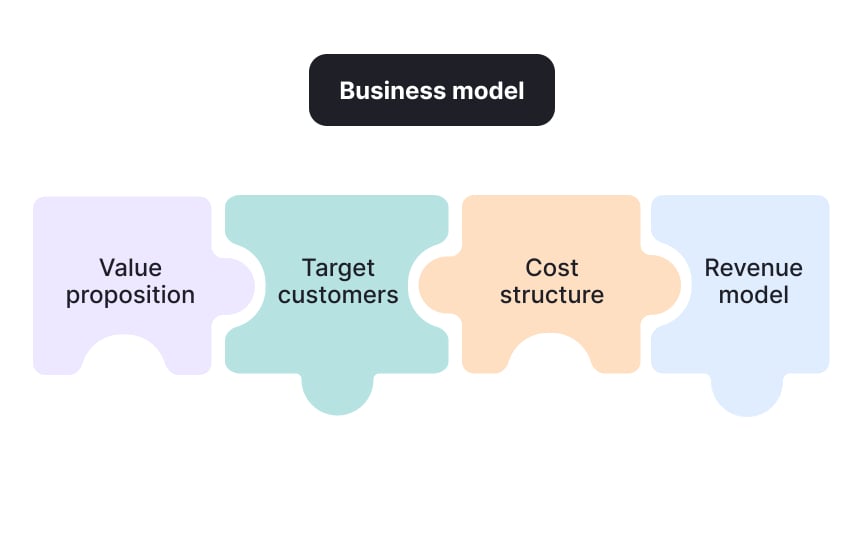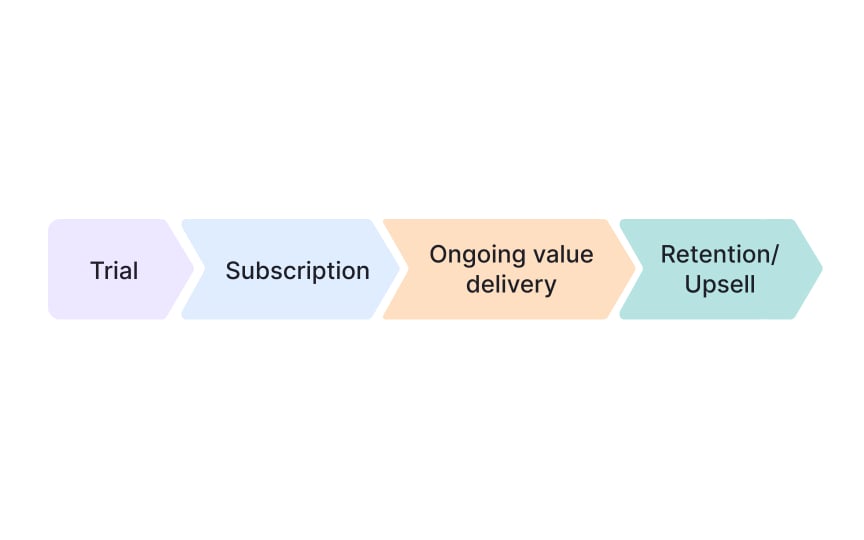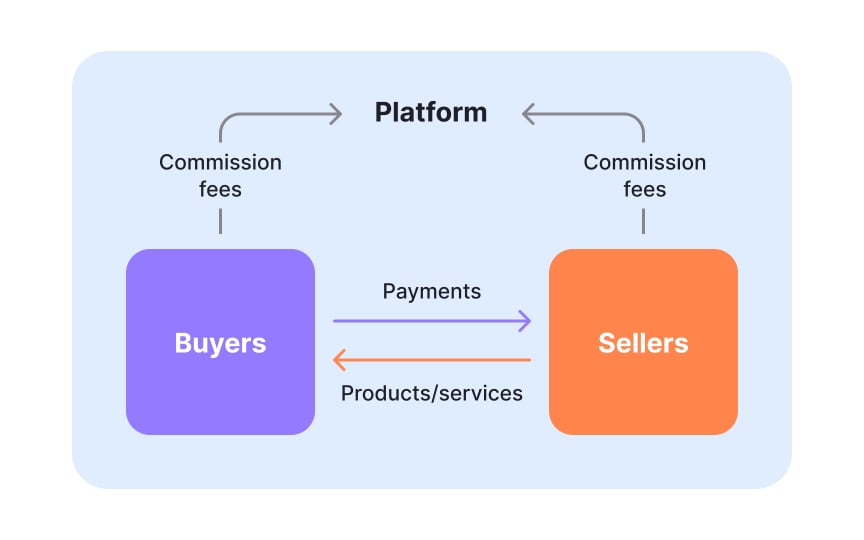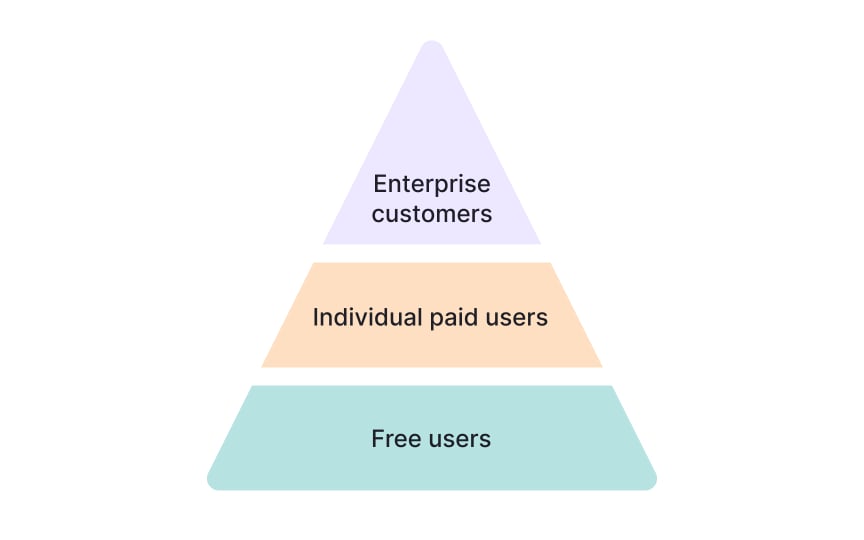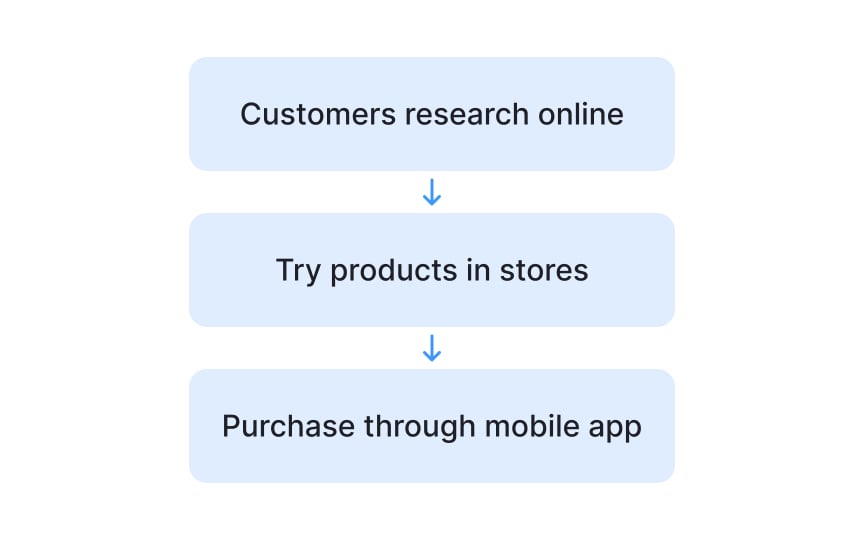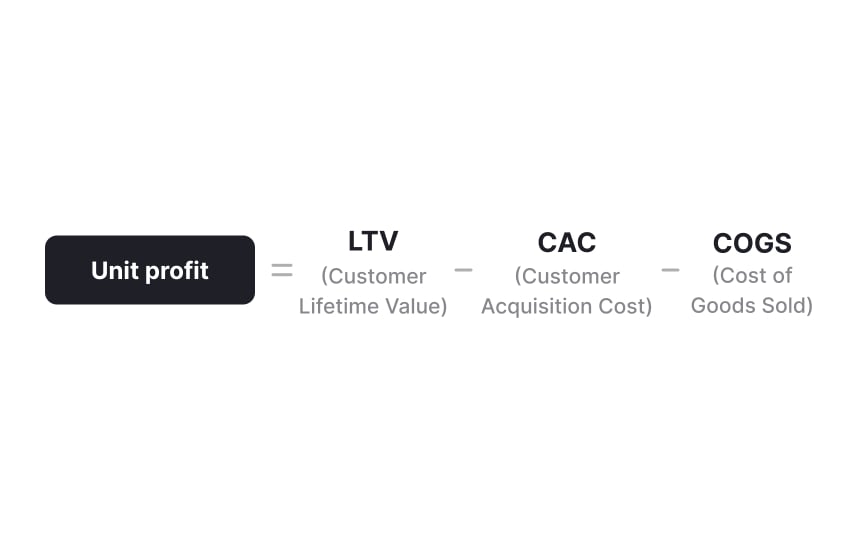Understanding Business Models
Explore the frameworks that turn great ideas into profitable products
Business models are the blueprints that define how companies create, deliver, and capture value. They encompass everything from revenue streams and cost structures to customer relationships and key partnerships. A strong business model answers fundamental questions about who your customers are, what value you provide them, and how you'll sustain your operations profitably. Think of companies like Netflix, which evolved from DVD rentals to streaming subscriptions, or Amazon, which expanded from online bookstore to cloud computing giant. These transformations weren't just product changes, they were business model innovations.
Understanding different business model patterns helps product managers identify opportunities for growth, spot potential disruptions, and make strategic decisions that align with company goals. Whether you're working with subscription services, marketplaces, freemium products, or platform businesses, grasping these fundamentals gives you the vocabulary and framework to contribute meaningfully to strategic discussions and drive product decisions that support sustainable growth.
A business model describes the fundamental logic of how an organization operates and makes money.
It consists of 4 core components:
- The value proposition (what you offer)
- Target customers (who you serve)
Revenue model (how you charge)- Cost structure (what you spend).
These elements work together to create a sustainable business. Every successful business model solves a specific problem for a defined customer segment. The solution is not limited to building and providing products — it can also be a service or combination of both. Consider how Uber connects riders with drivers, or how Spotify provides unlimited music streaming. For a business model to be sustainable, what customers pay must exceed the costs of creation and delivery, ultimately generating revenue for the organization.
Business models aren't static. They evolve based on market feedback, competition, and changing customer needs. Understanding this helps product managers evaluate whether new features or pivots align with the company's economic engine and strategic direction.
Successful businesses often combine multiple revenue streams to maximize income and reduce risk. For instance, Microsoft generates revenue through software subscriptions (Office 365), one-time purchases (Windows), cloud services (Azure), and hardware sales (Surface devices). This diversification creates financial stability and growth opportunities.
When designing revenue streams, consider your customers' willingness to pay, competitive pricing, cost structure, and your unique
The key to subscription success lies in delivering consistent value that justifies recurring payments. It’s also beneficial to provide ongoing benefits, whether through fresh content, regular updates, or continuous service improvements. Retention becomes crucial, as acquiring new subscribers typically costs more than keeping existing ones.
Subscription businesses benefit from predictable cash flow, enabling better financial planning and investment decisions. However, they require strong operational capabilities to maintain service quality and manage customer churn effectively.
Marketplaces connect buyers and sellers, facilitating transactions while taking a commission or fee. Unlike traditional retailers, marketplaces don't own inventory but provide the infrastructure for others to conduct business. Successful examples include eBay, Airbnb, and Uber, each creating value by reducing friction in specific markets.
Marketplace models face the "chicken and egg" challenge of attracting both sides of the market simultaneously. They must balance supply and demand while ensuring quality experiences for all participants. Network effects become powerful growth drivers as more users attract more users, creating exponential value.
Monetization strategies for marketplaces include transaction fees, listing fees, premium seller services, and advertising. The key is finding the right balance that encourages participation without deterring users from the platform.
Freemium models offer basic features for free while charging for premium functionality, combining user acquisition with monetization. This strategy allows users to experience value before paying, reducing barriers to entry. Successful freemium businesses like Dropbox, LinkedIn, and Zoom convert free users into paying customers through carefully designed upgrade paths.
Software as a Service (SaaS) delivers applications over the internet using the cloud on a
The challenge lies in finding the right balance between free and paid features (although not all SaaS products provide freemium plans). Too much free value reduces conversion rates, while too little fails to attract users. Successful freemium products typically convert 2-5% of free users to paid plans.[1]
E-commerce models sell products directly to consumers through digital channels, while retail models encompass both online and physical store operations. Successful e-commerce businesses optimize for convenience, selection, and
Modern retail strategies often blend online and offline experiences, creating omnichannel approaches. Customers might research online, try products in stores, then purchase through mobile apps. This integration requires sophisticated inventory management and consistent brand experiences across all touchpoints.
Key success factors include efficient supply chain management, compelling user experiences, and effective customer acquisition strategies. Profit margins vary widely based on product categories, operational efficiency, and market positioning.
While subscription and marketplace models dominate digital businesses, several other powerful approaches exist:
- Direct sales models generate
revenue through one-time product transactions, providing immediate cash flow and clear value exchange - Fee-for-service businesses monetize specialized expertise and time, allowing professionals like consultants and lawyers to scale their knowledge
- Lease and rental models transform capital expenditures into operational expenses, providing customers flexibility while ensuring recurring revenue
- Insurance models pool risk across many customers, collecting regular premiums in exchange for financial protection against specific events
- Advertising models generate revenue by offering free or low-cost products while monetizing user attention through sponsored
content , display ads, orbrand partnerships - Franchising leverages proven business systems to rapidly expand through third-party operators while maintaining brand consistency
- Pay-as-you-go models align costs directly with consumption, enabling precise billing for utilities, cloud services, and other metered offerings[2]
Understanding these alternatives helps product managers identify opportunities beyond common digital models.
The Business Model Canvas is a strategic tool that visualizes nine essential building blocks of any business on a single page.
Conceptualized by Alexander Osterwalder, it includes:
Value proposition - Customer segments
- Channels
- Customer relationships
Revenue streams- Key resources
- Key activities
- Key partners
- Cost structure[3]
All building blocks are interconnected, meaning changes to one element affect the others. For example, modifying your value proposition may require different key resources or activities to deliver your product. This interconnectedness helps businesses think holistically about their model and understand how each component supports the whole.
The BMC's simplicity makes it popular among entrepreneurs, startups, and established businesses for identifying crucial aspects of their business model. Product managers use it to align decisions with strategy, test assumptions, and communicate plans effectively to stakeholders.
Unit economics analyzes the direct revenues and costs associated with a single unit of your business model, whether that's one customer, transaction, or product sold. Understanding these metrics helps determine if your business can be profitable at scale. Key metrics include Customer Acquisition Cost (CAC), Lifetime Value (LTV), and contribution
Healthy unit economics show that you earn more from customers than it costs to acquire and serve them. A common benchmark is maintaining an LTV:CAC ratio of at least 3:1, meaning customer lifetime value should be 3 times the acquisition cost.[4] This buffer accounts for operational expenses and provides room for growth.
Many startups fail because they scale before achieving positive unit economics. Growing a business with negative unit economics only amplifies losses. Focus on optimizing these fundamentals before pursuing aggressive expansion.
Pro Tip: Calculate unit economics for different customer segments separately to identify your most profitable audiences.
Analyzing competitors' business models reveals market opportunities and potential threats. This process involves understanding how rivals create and capture value, their
Effective analysis examines multiple dimensions: pricing strategies, customer segments, distribution channels, and value propositions. Consider how competitors' models create moats or vulnerabilities. For example, Netflix's
Use frameworks like Porter's Five Forces[5] or SWOT analysis[6] to structure your competitive assessment. Document findings in a comparison matrix highlighting key differences and similarities. This intelligence informs strategic decisions about differentiation and market positioning.
Pro Tip: Study successful companies outside your industry that serve similar customer needs for innovative model ideas.
Business model innovation involves fundamentally rethinking how you create and deliver value, often disrupting existing markets. Unlike product innovation, which improves offerings, business model innovation changes the underlying logic of the business. Successful examples include Uber disrupting taxis through asset-light operations and Apple transforming music sales with iTunes.
Innovation opportunities emerge from changing customer behaviors, new technologies, or regulatory shifts. The key is identifying assumptions in current models that no longer hold true. Question everything: Who pays? What do they value? How is value delivered? What resources are truly necessary?
Experimentation is crucial for business model innovation. Test new approaches through small pilots before full implementation. Many breakthrough models seemed counterintuitive initially, like giving away razors to sell blades or offering free software to generate service
References
- The Ultimate Guide to Improving Freemium Conversion Rate for SaaS | Thoughts about Product Adoption, User Onboarding and Good UX | Userpilot Blog
- Porter's Five Forces Explained and How to Use the Model | Investopedia
